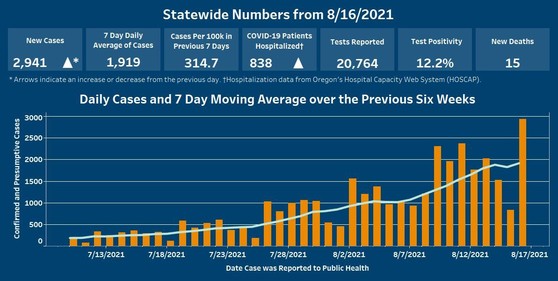August 17, 2021

For some children, learning from home the past year has been a welcome break from school days that were difficult to navigate. For others, closing schools resulted in the loss of a daily routine and an environment in which they thrived.
Change can be hard, even for those who are excited about it. Children’s feelings about the transition back to in-person school may be complicated and their reactions may change as time goes on. Parents and caregivers will also likely have new feelings about it, which may not be the same as their kids’ reactions.
Here are some ways to help your child with the transition:
- Remember the fundamentals. A regular pattern of a good night’s sleep and eating nutritious meals and snacks goes a long way to fuel flexibility, engagement and problem-solving during the day.
- Re-establish morning and afternoon routines. Involve your child in deciding the details. Having opportunities for choice and agency makes handling uncertainty easier for everyone.
- Create a visual aid like a calendar to help them understand what to expect in their new routine.
- Let them know what might be different at school this year.
-
Ask your child what they are feeling and how you can support them. Knowing you recognize that this is an exciting and challenging time and you are open to listening is reassuring, regardless of whether they have something to share.
- What your child is feeling may not be what you expect. Let them know that whatever they are feeling is OK.
- You may not be able to offer answers or certainties. Like adults, kids find it helpful to have someone who will just listen.
- If talking is not your child’s thing, think about drawing with them, playing/listening to music, playing catch, swinging, going for a stroll. Doing something often inspires communication.
- Encourage them to think of what will be good about returning to school.
-
Your child may be worried about bringing COVID home. Reminding them of what your family and the school are doing to reduce the chances of infection can help them feel calmer.
If you think your child or family may need more support, contact your child’s primary care provider or check out the Safe + Strong mental and emotional health resources page.
Here are some links to learn more:
If your children are 12 or older, they can get vaccinated against COVID-19. If you have questions about the vaccine’s safety or effectiveness, we encourage you to talk with your trusted health care provider. You can find a vaccine at getvaccinatedoregon.gov.
  
We want to keep you informed about COVID-19 in Oregon. Data are provisional and change frequently.
• Samples for 349,687 tests have been reported positive.
• Samples for 5,651,912 tests have been reported negative.
Today, OHA reported that 6,439 new doses of COVID-19 vaccinations were added to the state immunization registry. Of this total, 2,144 were initial doses and 1,056 were second doses administered on Aug. 16. The remaining 3,075 were administered on previous days but were entered into the vaccine registry on Aug. 16. Cumulative daily totals can take several days to finalize.
Oregon has now administered 2,727,893 first and second doses of Pfizer, 1,812,233 first and second doses of Moderna and 190,254 single doses of Johnson & Johnson COVID-19 vaccines.
As of today, 2,557,489 people have had at least one dose of a COVID-19 vaccine and 2,354,372 people have completed a COVID-19 vaccine series.
These data are preliminary and subject to change.
Updated vaccination data are provided on Oregon’s COVID-19 data dashboards and have been updated today.
Today we're reporting 2,941 new confirmed and presumptive cases of COVID-19 as of 12:01 a.m. today, bringing the state total to 245,758. The new cases reported today includes new cases that were reported to some counties over the weekend and are in the following counties: Baker (3), Benton (29), Clackamas (151), Clatsop (36), Columbia (71), Coos (76), Crook (27), Curry (8), Deschutes (94), Douglas (300), Gilliam (6), Harney (14), Hood River (12), Jackson (247), Jefferson (11), Josephine (110), Klamath (52), Lane (253), Lincoln (42), Linn (110), Malheur (39), Marion (363), Morrow (11), Multnomah (145), Polk (43), Tillamook (27), Umatilla (84), Union (40), Wallowa (4), Wasco (25), Washington (420) and Yamhill (88).
There are 15 new COVID-19 related deaths in Oregon, raising the state’s death toll to 2,964.
The number of hospitalized patients with COVID-19 across Oregon is 838, which is 86 more than yesterday. There are 222 COVID-19 patients in intensive care unit (ICU) beds, which is 16 more than yesterday.
The total number of patients in hospital beds may fluctuate between report times. The numbers do not reflect admissions per day, nor the length of hospital stay. Staffing limitations are not captured in this data and may further limit bed capacity.
For more information, visit healthoregon.org/coronavirus.
Learn more about COVID-19 vaccinations
To learn more about the COVID-19 vaccine situation in Oregon, visit our webpage (English or Spanish), which has a breakdown of distribution and other information.
Did someone forward this to you? You can subscribe here.
|